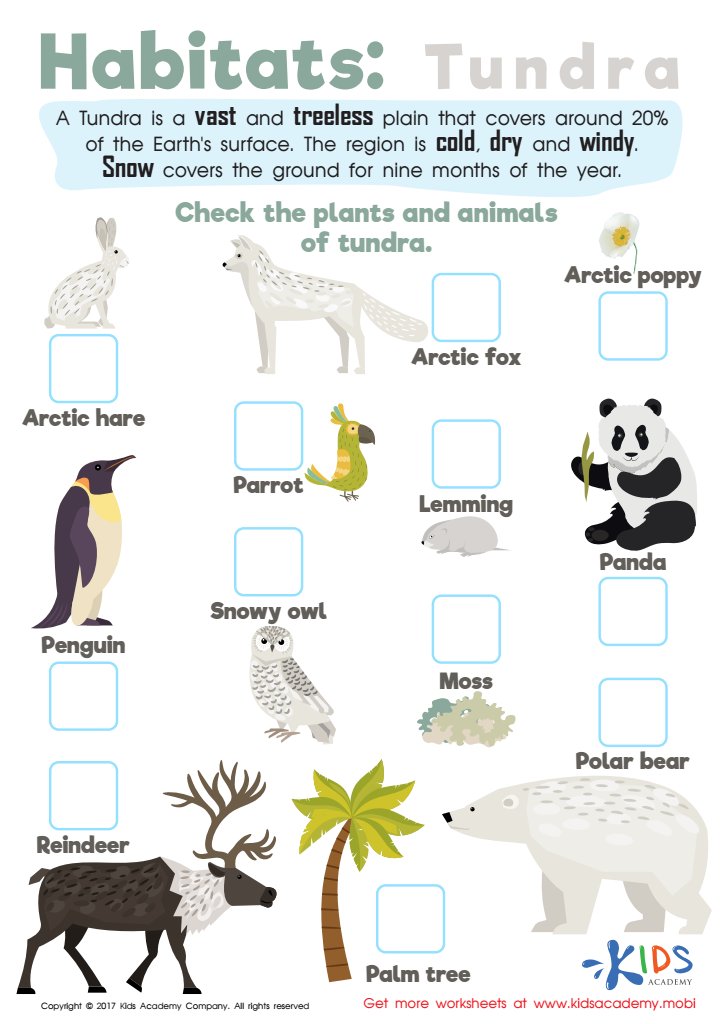Understanding tundra habitats Worksheets for Kids
1 filtered results
-
From - To


Tundra Habitats Worksheet
Question/Answer
What does the Understanding tundra habitats skill mean when it comes to Grade 3 Life Science learning?
The Understanding tundra habitats skill in Grade 3 Life Science involves learning about the characteristics, plants, animals, and environmental conditions of the tundra ecosystem. Students explore how organisms adapt to the cold, dry, and open habitat, recognizing the tundra as a unique biome with its specific climate and biodiversity.
How does the mastery of the Understanding tundra habitats skill affect a student's performance at an early age?
Mastery of the Understanding tundra habitats skill at an early age can enhance a student's performance by fostering curiosity about the natural world, improving comprehension of ecological concepts, and promoting critical thinking. It also aids in developing a broader vocabulary related to biodiversity and conservation, potentially leading to better academic outcomes in science and environmental studies.
What are some effective activities to train students’ Understanding tundra habitats skill when teaching them about Life Science?
Effective activities include creating a biome diorama project, simulating permafrost experiments, researching and presenting on tundra animals and plants adaptation, interactive digital games focusing on tundra ecosystems, and virtual field trips to explore tundra regions. These activities engage students in hands-on learning, enhance their understanding of tundra habitats, and develop their research and presentation skills.
 Assign to the classroom
Assign to the classroom












